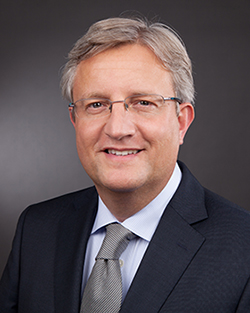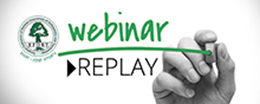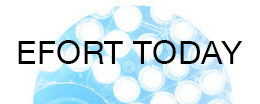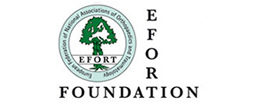A Q&A with Professor Dr. Christian Heiss
Professor Dr. h.c. Christian Heiss, head of the Department of Trauma, Hand and Reconstructive Surgery at the University Hospital of Giessen, Germany gave information to EFORT about the advantages and disadvantages of a synthetic, biodegradable and osteoconductive bone substitute material known as PerOssal® – a degradable composite of calcium sulphate and nanocrystalline hydroxyapatite – which has been sold internationally for over 15 years. Through recent webinars Prof. Heiss and several colleagues have demonstrated that often when dealing in surgical site infections, antibiotic therapy, revision arthroplasty, bone substitute and other bone defects, sometimes newer doesn’t always mean better in product selection and often the materials best suited for the procedure at hand are more readily available than one might think. PerOssal® is an osteoconductive bone substitute material for restoration and filling of bone defects. Its unique structure allows uniform uptake of liquid substances, e.g., antibiotics for sustained release, and it is completely resorbable, eliminating the need for explantation of the material. We asked Prof. Dr. Heiss to tell us more about his nearly two-decade clinical experience with PerOssal® along with many other synthetic bone substitutes, learning some of the unique characteristics he has encountered, which only add to the product’s usefulness in his practice, beyond the vast amount of supporting clinical data. He summed up his reasoning for including PerOssal® as a mainstay in his practice with a pun only a truly experienced orthopaedic surgeon could make, “If it isn’t broken, why fix it?”
QUESTIONS & ANSWERS
Can you provide an overview of the work you are performing at the Department of Trauma, Hand and Reconstructive Surgery at the University Hospital of Giessen?
In my department, we conduct standard research led by a team of scientists to explore bone diseases and examine innovative methods for the repair of diseased bone. For example, we have innovative approaches in developing biomaterials for cartilage regeneration using autologous biopsies from the ribs and other projects where cartilage regeneration is completely synthetic. Further, my team is interested in analyzing extracellular bone matrix in-depth to explore micromechanical alterations around biomaterials to better predict their suitability, osseointegration and long-term stability. These research questions impact the choice of biomaterial in day-to-day clinical procedure, so we take our work very seriously. In addition, we have a strong clinical research team that is very active in clinical evaluation of new biomaterials through pilot studies and clinical evaluation through retrospective studies and post-market surveillance (PMS) and post-market clinical follow-up (PMCF) requirements, in collaboration with industry in light of Europe’s new Medical Devices Regulation (MDR).
In the department we are dealing with trauma patients with bone defect after an injury, with treatment of all kinds of fractures and with treatment of bone infections, aseptic pseudarthrosis and infected pseudarthrosis, reconstructions of different kind of bone and soft tissue defects.
Speaking of the new MDR, in the past several years leading up to the new regulations we have discussed foreseen issues with MDR with clinicians, regulators and industry each with unique predictions on its impact to practice. What is the impact of MDR you foresee?
I focus only on the quality of bone substitutes. We have a lot of bone substitutes on the world market, in fact, over one hundred of them, and in my lab, we have developed a lot of bone substitutes. MDR is all about safety for our patients and having worked over 25 years handling on the one side research in the lab, and on the other side, directly with the patients, I can attest that bone substitutes have a long history of clinical studies for efficacy and safety.
My experience tells me that products like these, with literature and clinical data to support them, will not be hindered by MDR. We have, at times, heard that MDR could have an impact on pricing of materials, but we have no direct evidence of this with the bone substitutes with which we work. I say often to my team that we do have to operate as a business. The amount I earn from any procedure is set in Germany by the DRG system, and for me any sort of impact on pricing can impact my “business.” Price of materials, therefore, is extremely important to my practice. I have not seen MDR as having any impact on pricing for the bone substitutes I work with. In fact, in the case of PerOssal® specifically, it is now distributed internationally directly by its German-based manufacturer (Osartis), which makes it even more reliable for my practice and more available as a tool for orthopaedic surgeons without any MDR-caused disruptions or price increases. Remember, the material has been around for 15 years and is supported by strong data.
Beyond pricing and availability, what do you look for in a bone substitute for the sake of your “business” and patients?
Generally, bone substitutes work well inside the human being in the bone. When we have open fractures or bone defects after trauma, we have infection. For me, I am looking for a really well working and safe bone substitute that also works well to manage infection. Can we load the bone substitute with antibiotics? Is it custom loadable? That, for me, is of extreme importance. I need good osseointegration of the bone substitute in the bone as well as the reabsorption of the bone substitute in the bone. Does it promote natural bone growth? Does it increase volume with autologous cancellous bone transplantation? Depending on the indication, there are a series of qualities important to me.
With PerOssal®, for example, you can load it up with different kinds of antibiotics, and being able to combine two different kinds of antibiotics is a key point for me. In my practice, we take out biopsies for an antibiogram, which allows us to identify the specific bacterium causing infection. More and more, we find situations involving two or three unique bacteria. PerOssal® allows you to fight against multiple bacteria with only one antibiotic, but if there are two bacteria then we need two antibiotics. PerOssal® allows you to fight in one bone substitute with two antibiotics against two bacteria, and this is a key advantage of using PerOssal® in practice.
What about those cases where there are defects in the bone without infection? Perhaps a bone substitute with antibiotic delivery is not the best substitute in this situation.
Another clear advantage of PerOssal® is its flexibility to the given situation. You can use it impregnated with antibiotics, but you can also use it without antibiotics entirely. Up until now, we have been discussing antibiotics and infection, but if I have a bone defect generally, I can treat the bone defect with the PerOssal® pellets/beads even without infection. I use PerOssal® often to fix small bone defects, which produces an integration of the pellets in the bone. In these cases, PerOssal® is a good option, and for different indications it is a perfect material. Preparation time is also very low.
So preparation time is low, it allows for multiple antibiotic loading, and can be used in a variety of situations. One other claim I have seen about it from the manufacturer is that it is osteoconductive. What weight does that bear on your selection of a bone substitute?
I have no experience in the other competitor products when it comes to osteoconductivity, and most importantly, I have no evidence-based results to compare, so specific to osteoconductivity I wouldn’t endorse one product over another. What I can say is that from my clinical experience, I know that there are good conductive elements in the product. Already, osteoconductivity does not impact PerOssal® as a drug delivery tool. We have a better, much better, osteoconductivity if we work with PerOssal® pellets in combination with cancellous bone (autograft). Most important to having success in this case is the integration of the product in the bone. To get integration, we need osteoconductivity. I need a product that allows me to treat the defect, and then I see it 6–8 months later and the defect is healed. In this case, PerOssal® fits the bill, but I cannot say for this specific application whether it is better than other competitors.
Overall, I would say that the large number of different bone substitutes each have specific traits that are important. For antibiotic loading, PerOssal® sets itself apart by allowing for sustained release of two or three different antibiotics, which comes extremely in handy when my antibiogram shows that there are two or three bacteria causing the infection. It has been on the market with a stellar safety record and clear data demonstrating its efficacy. “If it’s not broken, don’t fix it.” I cannot think of a more perfect phrase to describe PerOssal® as we use it frequently in my practice. It is true that PerOssal® is not a brand-new development, but therefore it has a long track record of clinical safety and efficacy and works very well. Why would anyone want to change the winning team, or the winning bone substitute material? It has endured the test of time, has good data supporting its efficacy, and I have used it so frequently in my own practice that I just find it works in a flexible way, supporting my work in different indications but most importantly when fighting against infections.
FURTHER READING
- M. Rauschmann, A. Wichelhaus, V. Stirnal, E. Dingeldein, L. Zichner, R. Schnettler, V. Alt, Nanocrystalline hydroxyapatite and calcium sulphate as biodegradable composite carrier material for local delivery of antibiotics in bone infections, Biomaterials 26 (2005) 2677–2684.
- C. Fleege, M. Rauschmann, A. Wichelhaus, Antibiotikatherapie der pyogenen Spondylodiszitis bei Erwachsenen. Die Wirbelsäule 01 (2017) 284-293.
- G. Visani, E.L. Staals, D. Donati, Treatment of chronic osteomyelitis with antibiotic-loaded bone void filler systems: an experience with hydroxyapatites calcium-sulfate biomaterials. Acta Orthop Belg. 84 (2018) 25-29.
- D. von Stechow M.A. Rauschmann, Effectiveness of Combination Use of Antibiotic-Loaded PerOssal® with Spinal Surgery in Patients with Spondylodiscitis, Eur Surg Res 43 (2009) 298–305.
- C. Fleege, T.A. Wichelhaus, M. Rauschmann, Systemische und lokale Antibiotikatherapie bei konservativ und operativ behandelten Spondylodiszitiden, Orthopäde 41 (2012) 727–735.
- Berner, H. J. Linde, T. Schubert, M. Nerlich, C. Englert, Osteitisbehandlung an Unterschenkeln mit Knochenersatzmaterial als lokalem Antibiotikumträger, Z Orthop Unfall 146 (2008) 371–374.
About the Products or Services Mentioned
Neither the author of this article nor EFORT endorse any specific products or services. Any mention of products or services are informative and reader discretion is advised. Scientific information on any claims made or potential conflicts of interest may be obtained directly from the sources referenced, which include:
Univ.-Prof. Dr. med. Dr. h.c. Christian Heiss is the Director of the Department of Trauma, Hand and Reconstructive Surgery – Operative Emergency Department at the University Hospital Giessen, Rudolf-Buchheim-Strasse 7, 35385 Giessen, Germany. Visit www.ukgm.de for further information.
OSARTIS GmbH offers a wide range of bone cements and accessories, primarily for application in arthroplasty, vertebroplasty and kyphoplasty. Contact Dr. Daniel Zukowski, Managing Director at +49 (0) 6071 929 0 or visit www.osartis.de.



